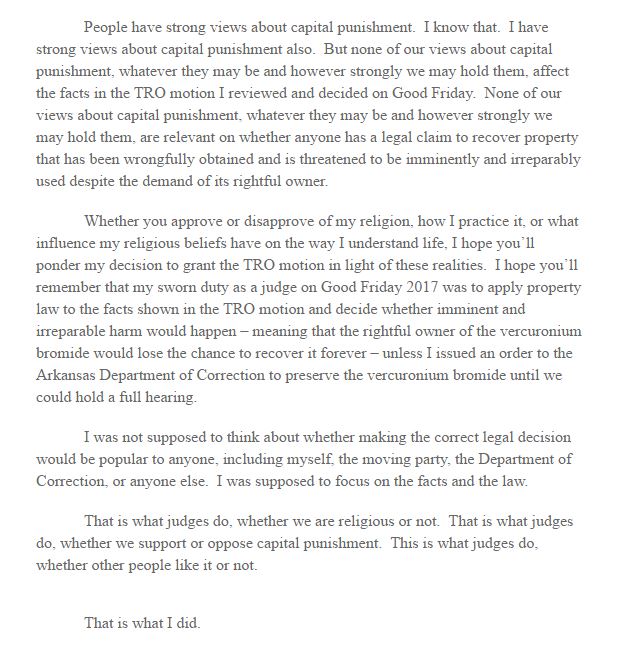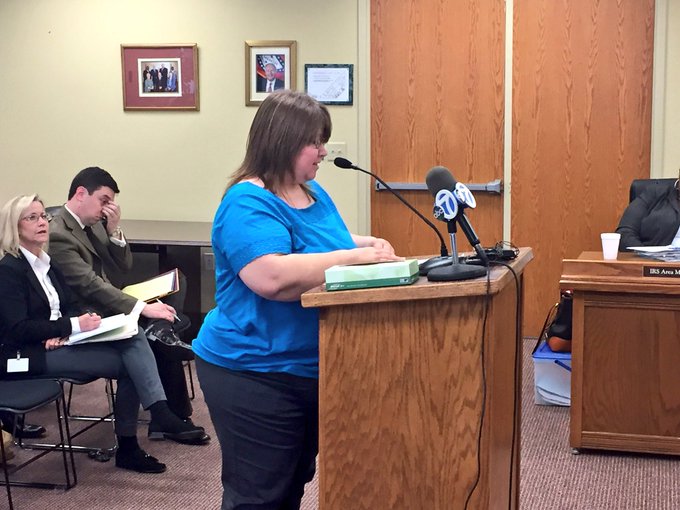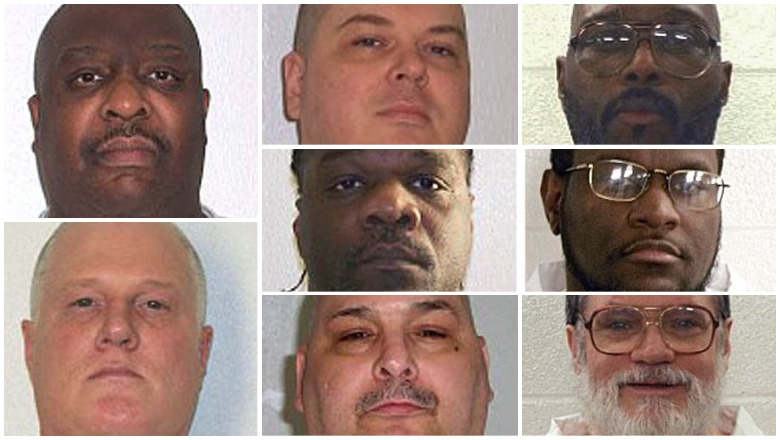
The eight inmates that Arkansas is trying to put to death. (Correctional photos)
The State of Arkansas is trying to execute eight inmates in 11 days in what critics are deriding as an unprecedented “conveyor belt” implementation of the death penalty.
The state’s reason is also generating controversy: Arkansas is moving so fast because a drug it uses to administer lethal injections is set to expire. The state “had earlier planned to execute eight inmates …before Arkansas’ supply of the drug runs out at the end of the month,” starting on April 17, reported CNN.
Despite court intervention, the state executed the first of the 8 – Ledell Lee – on the evening of April 20. The executions of two others – Jack Jones and Marcell Williams on Monday April 24.
Multiple courts have intervened in a variety of ways to halt the speedy execution plan, and as of April 19, the executions were temporarily halted after two court decisions came down amidst a flurry of them. Arkansas can appeal the decisions, but it will be hard pressed to have an answer before the drug expiration date, reported ABC News. However, CNN reports that the Arkansas Supreme Court reversed a judge’s restraining order that had halted the executions.
In one case, a man who was set to be put to death on April 20 was given a reprieve from a judge so he can seek enhanced DNA testing in an attempt to prove his claims of innocence. Lee also claimed he was innocent. The crimes the eight inmates were convicted of committing are extremely horrific.
Here’s what you need to know:
1. The State Wants to Execute the Prisoners Before Its Batch of Midazolam Runs Out & the Multiple Execution Plan Would Have been the Most Since 1976
The rapid pace of compressed executions the state wanted to carry out would have made it unique since at least 1976. According to The Chicago Tribune, “The state set the compressed schedule because its supply of one of the lethal injection drugs expires at the end of April” 2017.
The eight executions – almost one per day – “would have been the most by a state in such a compressed period since the U.S. Supreme Court reinstated the death penalty in 1976,” reported ABC News.
It’s all a remarkable move by a state that hasn’t put anyone to death for a decade, according to The Huffington Post.
According to The New York Daily News, “Midazolam is a common sedative used typically by medical doctors. The drug is designed to sedate or relax the patient before undergoing minor surgical procedures,” and it has been used in executions since 2013 but there have been reports of inmates waking up.
2. A Judge Halted the Executions After a Different Judge’s Decision Was Vacated When He Went to an Anti-Death Penalty Rally
The drug company has gone to court to try to halt the execution plan, and it won a critical ruling (although it can be appealed, and the state AG says it will be). The practical effect of the April 19 ruling is that it stops – at least for now – the state’s plan to put all eight inmates to death.
There was an odd twist leading up to the recent ruling. The week before, a different judge, Wendell Griffen, issued a similar ruling – saying the state couldn’t use the drug vecuronium bromide – “but the Arkansas Supreme Court vacated Griffen’s ruling days after he participated in an anti-death penalty rally,” ABC News reported.
In a statement, Griffen explained why he lay motionless on a cot in front of the Arkansas governor’s mansion:
According to The Huffington Post, McKesson Corp, which supplied the drug to Arkansas argued in court that the “state misleadingly obtained its product.”
A Circuit Judge in Arkansas, Alice Gray, on April 19 granted a temporary restraining order sought by McKesson. The drug in question is called pancuronium bromide, and it’s step two in a “three-drug cocktail” the state uses to put inmates to death, paralyzing the prisoner, reported Huffington Post.
The “court order effectively blocks the state from carrying out any executions for as long as it’s in place,” the Post reported.
The company wrote in its court filing that the drug has a “number of beneficial uses in traditional surgical settings” but is “also used by some state correctional facilities as an essential component of those states’ and facilities’ capital punishment regimen.”
McKesson claims that the manufacturer of the drug has “included clauses in its sale agreements that prohibit distributors from selling specific drugs that are capable of being used in capital punishments to federal and state correctional facilities that engage in capital punishment.”
The company claims that it was “led to believe that the order was placed at the request of or for the benefit of the licensed physical and would be used for a legitimate medical purpose… In fact (Arkansas) intended to use this product in connection with executions, a fact that was never disclosed to McKesson.”
The company wrote on its website: “Today, McKesson Corporation was granted a temporary restraining order by the Circuit Court of Pulaski County Arkansas that prohibits the Arkansas Department of Correction from using vecuronium bromide obtained by McKesson… We are pleased that the court has ruled in our favor and we look forward to the return of our product.”
Pfizer is also taking action to stop the state from using the drug.
The Arkansas Supreme Court then reversed the judge’s retraining order, reports CNN.
3. One of the Eight Inmates, Stacey Johnson, Was Granted a Reprieve to Try to Prove His Innocence
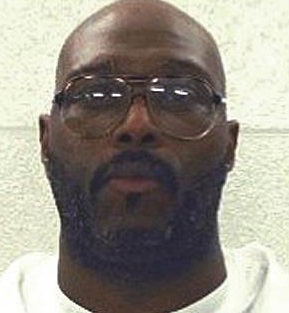
Stacey Johnson correctional photo.
One of the flurry of court hearings that stalled the Arkansas multiple execution plan involves an inmate who insists he’s innocent and wanted a chance to see if DNA could prove it.
According to CNN, the state Supreme Court “granted inmate Stacey Johnson a stay” on April 19, the day before he was scheduled to be executed, “ruling 4-3 that he has a right to an evidentiary hearing after he requested DNA testing to prove his innocence.”
Johnson is on death row in the murder of a young mother named Carol Heath, “who was beaten and had her throat slit in her flat in 1993” while her children were in the home, reports BBC.
According to the Innocence Project, Heath “was attacked in her home sometime on either April 1 or 2, 1993. Heath was found on her living room floor wearing only a t-shirt. The evidence suggested that she had been raped, strangled and then stabbed in the throat. Her purse was later found at a highway rest stop. Near the purse were two shirts subsequently determined by DNA testing to be stained in the victim’s blood.”
The victim’s six-year-old daughter identified Johnson as the murderer, according to the Innocence Project. The project noted, “A New Mexico police officer also claimed that Johnson admitted to the murder in passing, despite the officer’s failure to mention the admission in any report or in the detailed written statement he obtained from Johnson.”
The first conviction was overturned, and Johnson was retried and convicted. He had admitted previously being in the victim’s apartment, and “Johnson’s DNA was identified on hairs recovered from the victim’s apartment…and a cigarette butt that was allegedly recovered from the pocket of a sweat shirt found at a highway rest stop along with the victim’s purse,” says the Innocence Project. Among other arguments, the Innocence Project contends that DNA testing has so advanced that other items can now be tested that might yield DNA. The victim had bite marks on her breasts, and a man with whom there was a history of domestic violence had abused his ex-wife in that manner.
“Caucasian hairs were collected from the scene and from one of the shirts found stained in the victim’s blood,” and the child’s therapist thought she was being pressured to identify Johnson, reports the Innocence Project.
Johnson wanted the chance to seek new DNA testing in lower courts and was granted it.
4. The Executions of the Others Were Also Halted, Including That of Ledell Lee, Whose Lawyer Was Allegedly Intoxicated in Court & the Judge Was Accused of Having an Affair With the Prosecutor
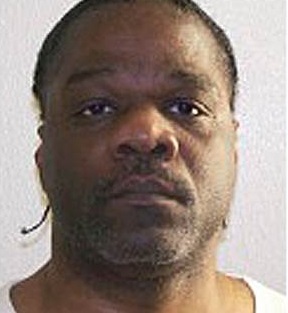
Ledell Lee correctional photo.
One-by-one, the inmates have been granted stays of executions by various courts, but there was one execution still planned: That of an inmate named Ledell Lee.
The McKesson decision halted his execution too. It was supposed to take place on April 20. According to The Chicago Tribune, Lee also maintains he is innocent.
Lee was convicted in the murder of Debra Reese. According to THV-11, Reese was raped and murdered in her home in 1993 at age 26 and was “struck approximately 36 times with a tire thumper, a tool used by truck drivers to check their tire pressure.” Her husband had given it to her for protection because he was a trucker who was often gone, the television station reported.
According to THV, Lee was arrested after “witnesses claimed they saw him walking down the street that Reese’s house was on,” but he says he’s innocent. The television station reports that Lee was suspected of other crimes by authorities, including the strangulation and rape of another woman, but that trial ended in a hung jury. He was also convicted of two other rapes, reported THV.
The ACLU reports that Lee has raised other issues in court, arguing that “he has fetal alcohol syndrome disorder, significant brain damage, and intellectual disability. These facts were concealed by the line of counsel plagued with conflicts of interests, substance abuse, serious mental illness, and gross incompetence.”
There were other odd and disturbing twists in the case. “Lee was tried by a judge who concealed his own conflict of interest: an affair with the assistant prosecutor, to whom the judge was later married. Mr. Lee’s first state post-conviction counsel introduced the evidence of the affair by calling the judge’s ex-wife, who testified about the affair after opposing the subpoena. That lawyer, however, was so intoxicated at the hearing that the state moved for him to be drug tested after he slurred, stumbled, and made incoherent arguments,” the ACLU reports.
The Innocence Project reports that Lee wants new DNA testing in the case: “Numerous unknown fingerprints were found at the crime scene, yet none were from Lee. At trial, the prosecution claimed that two small spots of ‘human blood’ on shoes recovered by the police from Lee were likely the victim’s blood. Yet despite the extremely bloody nature of the crime, no other blood was found anywhere on Lee’s shoes, or any of his clothing. Newly available DNA testing could prove whether the spots were in fact victim’s blood.”
The Innocence Project says there are also hairs it wants tested that “the state’s experts claimed that the hairs were ‘consistent’ with Lee’s based on microscopic examination – a forensic method that has since been discredited.”
According to the Tribune, two of the other inmates won reprieves on arguments revolving around mental illness.
Bruce Ward is on the list. He “has consistently displayed signs of mental illness for almost 30 years,” reports the Guardian. Diagnosed as a paranoid schizophrenic, he was convicted of “murdering Rebecca Doss, an 18-year-old clerk at the Jackpot Service Station in Little Rock,” according to The Guardian.

Bruce Ward corrections photo.
A legal filing in the case says that Doss’ body was discovered “lying on the floor of the men’s restroom. She had been strangled to death.” A police officer had seen Ward walking out of the gas station, the filing said. The Arkansas Supreme Court issued a stay so that Ward’s sanity could be evaluated, reports ArkTimes.com.
The U.S. Supreme Court intervened to stop the death of inmate Don Davis, maintaining a stay in the case. According to CBS News, “Davis was sentenced to die for the 1990 death of Jane Daniel in Rogers, who was killed in her home when Davis broke in and shot her with a .44-caliber revolver he found there.”
The Supreme Court did not comment on the decision, but let a lower court decision stand that stayed Davis’ execution after he argued that lethal injection was cruel and inhumane. He was convicted of shooting Daniel “once in the head in a storeroom in her house… Davis was arrested in New Mexico after his roommates went to the police with their suspicions about his involvement. Most of the stolen objects were recovered and traced back to Davis,” reports Murderpedia.
Kenneth Williams was one of the eight inmates scheduled to die. According to USA Today, when initially sentenced to life in prison “for the 1998 killing of University of Arkansas-Pine Bluff cheerleader Dominique Hurd,” he taunted the victim’s family by saying, “You thought I was going to die, didn’t you?”

Kenneth Williams correctional photo.
The sixth inmate on the list, Jason Ferrell McGehee, was also granted a stay. He was scheduled to be put to death on April 27 for the murder of John Melbourne, Jr., 15, in 1996. The teen was beaten to death and strangled by a group of men who accused him of snitching on them in a check scheme.
The seventh inmate is Jack Harold Jones Jr. According to the AP, Jones “was convicted of killing bookkeeper Mary Phillips in 1995 and trying to kill her daughter, Lacy, during a robbery at an accounting office. Phillips was found naked from the waist down with a cord from a nearby coffee pot tied around her neck. Lacy, left for dead, woke up as police photographed her.”
Lacy was only 11.
The attack was horrific. A court decision in the case contains graphic details. It says, in part: “When he (Jones) returned, Lacy, now crying, asked the man not to hurt her mother, to which he replied, ‘I’m not. I’m going to hurt you.’ He began to choke Lacy until she passed out. After Lacy lost consciousness, Jones struck her at least eight times in the head with the barrel of a BB gun, causing severe lacerations and multiple skull fractures. When Lacy woke up, she saw blood and began to vomit. She went back to sleep and awakened later when police, seeing her bloodied body and thinking she was dead, were taking photographs of her.”
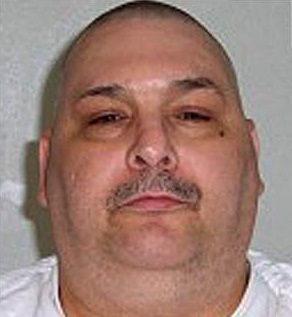
Jack Harold Jones correction photo.
Police found a gruesome scene: “Mary’s body nude from the waist down. A cord from a nearby Mr. Coffee pot was wrapped around her neck and wire was tied around her hands, which were positioned behind her back. Bruises on her arms and back indicated that she had struggled with her attacker prior to her death. According to autopsy results, Mary died from strangulation and blunt-force head injuries. Rectal swabs indicated that she had been anally raped before she was killed.” Jones confessed that “he had committed the crimes because he wanted to get revenge against the police. He reasoned that his wife had been raped, and that the police had done nothing about it.”
The final inmate listed is Marcel Williams. He confessed to suffocating “a young mother of two after raping her” and abducting her when she stopped for gas, USA Today reports. Her name was Stacy Errickson.
5. The Governor Has Criticized the Courts, Saying the Legal Rulings Are Unfair to the Victims’ Families
Arkansas Governor Asa Hutchinson is a supporter of the multiple execution plan, and he thinks the court actions cause extra pain to the victims’ families in the cases.
The governor wrote, “When I set the eight execution dates in accordance with the law and my responsibilities, I was fully aware that the actions would trigger both the individual clemency hearings and separate court reviews on varying claims by the death row inmates. I understand how difficult this is on the victims’ families, and my heart goes out to them as they once again deal with the continued court review; however, the last minute court reviews are all part of the difficult process of death penalty cases. I expect both the Supreme Court of Arkansas and the 8th Circuit Court of Appeals to review the decisions quickly, and I have confidence in the Attorney General and her team to expedite the reviews.”
Of the Johnson ruling, the governor wrote on Facebook, “I am both surprised and disappointed at the last minute stay by the Arkansas Supreme Court. When I set the dates, I knew there could be delays in one or more of the cases, but I expected the courts to allow the juries’ sentences to be carried out since each case had been reviewed multiple times by the Arkansas Supreme Court, which affirmed the guilt of each. The minority opinion was clear in its dissent, but I know the families of the victims are anxious for a clear-cut explanation from the majority as to how they came to this conclusion and how there appears to be no end to the court’s review. I will continue to work with the attorney general as we evaluate our next steps.”
In the stays of Don Davis and Bruce Ward, the governor wrote, “Once again last minute court rulings have changed the course of justice. Today, the 8th Circuit ruled the state could proceed with the death penalty sentence and expressed no concern over the execution schedule and the legislatively mandated means to carry out the lethal injection protocol. However, the State Supreme Court went a different direction and ruled that the execution of Don Davis and Bruce Ward could not proceed based upon the potential of some future direction of the U.S. Supreme Court that is unknown at the present time. This decision was not unanimous and the dissenting opinions reflect the harm the delays cause the families of the victims and it also expresses my frustration in the continued delayed justice. We have asked the US Supreme Court to overrule the Arkansas Supreme Court and hope to get a decision later tonight.”
Family members have spoken out. “My wife suffered big time,” said the husband of Mary Phillips.
Reese’ son has called Lee the “embodiment of evil that should never have to exist in this world,” reported THV. The children of Heath – for whose murder Johnson was convicted – disagree on whether he should be put to death, but the sister of Heath says their father died from a broken heart and the daughter says she has PTSD from the homicide, reports Arkansasnews.com.


